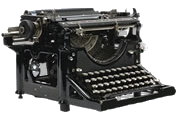In this 1920 article the theologian George Burman Foster (1858 – 1918), examined the writings of the German philosopher Friedrich Nietzsche (1844 – 1900) and surmised how that philosopher might have understood the First World War, with all of it’s scientific and industrial power.
War constitutes one of of those dangerous ‘experiments’ undertaken by the wise man to further the progress of life, to test the value of an idea, of life. Hence, war is beneficial, good in itself; and thus Nietzsche predicts without dismay or regret that Europe is not far from entering into a period of great wars when nations will fight with one another for the mastery of the world.
Click here to read about the Nazi interpretation of Nietzsche.

